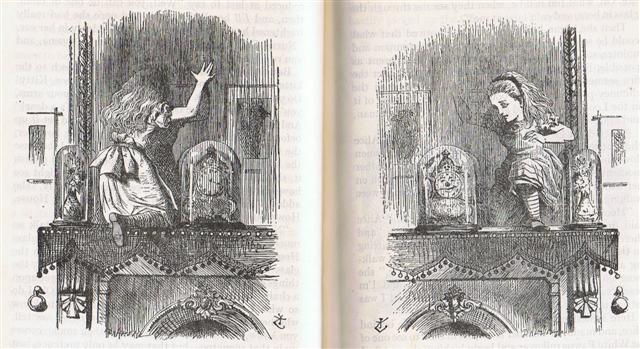375. The Lono (Rogo) circuit on Hawaii was 23 days long, we should remember, which fact fits rather well with the pair of Rogo figures in the G text:
... The correspondence between the winter solstice and the kali'i rite of the Makahiki is arrived at as follows: ideally, the second ceremony of 'breaking the coconut', when the priests assemble at the temple to spot the rising of the Pleiades, coincides with the full moon (Hua tapu) of the twelfth lunar month (Welehu). In the latter eighteenth century, the Pleiades appear at sunset on 18 November. Ten days later (28 November), the Lono effigy sets off on its circuit, which lasts twenty-three days, thus bringing the god back for the climactic battle with the king on 21 December, the solstice (= Hawaiian 16 Makali'i). The correspondence is 'ideal' and only rarely achieved, since it depends on the coincidence of the full moon and the crepuscular rising of the Pleiades ...
 |
63 + 23 |
 |
 |
383 |
| Gb6-26 |
Ga1-23 |
Ga1-24 |
| SIRRAH |
*87 |
BETELGEUZE |
| 88 = 64 + 24 |
384 |
 |
63 + 23 |
 |
 |
383 |
| Gb1-3 |
Gb3-29 (90) |
Gb3-30 (320) |
| ALSAFI |
*87 = *383 |
ADHIL |
| 472 = 88 + 384 = 64 + 404 |
Since the time of the Bull the precession had moved the Sun related days earlier and earlier in the framework of the fixed stars which could be observed in the night. Assuming the precession since the time of the Bull had moved the Sun cycle 80 days earlier - and then correlating the dates in the Sun cycle with the ancient method of waiting for the stars to reappear after their close encounters with the Sun (viz. 16 days) - we will be able to adjust the Sun (Gregorian) calendar positions with 80 - 16 = 64 (right ascension) days.
The implication seems to be that anciently the day before heliacal Betelgeuze had been at a solstice:
| CLOSE TO THE SUN: |
| 9-26 |
9-27 (*190) |
9-28 |
9-29 |
9-30 (273 = 3 * 91) |
| OCT 11 (*204) |
12 |
13 |
14 |
15 (288) |
 |
 |
 |
 |
 |
| Ga8-1 (204) |
Ga8-2 |
Ga8-3 |
Ga8-4 |
Ga8-5 |
| KELB ALRAI (Dog of the Shepherd) = β Ophiuchi, μ Arae (268.1), KEW HO (Nine Rivers) = μ Herculis (268.6), η Pavonis (268.7), APOLLYON = ι Scorpii (268.9) |
MULIPHEN (Oaths) = γ Ophiuchi (269.0), BASANISMUS = G Scorpii (269.5), PHERKARD (Dim One of the Two Calves) = δ Ursae Minoris (269.9) |
PTOLEMY CLUSTER = M7 Scorpii (270.5), GRUMIUM (Lower Jaw) = ξ Draconis (270.9) |
RUKBALGETHI GENUBI (Bending Claw) = θ Herculis (271.1), ξ Herculis (271.5), ETAMIN (Head) = γ Draconis, ν Herculis (271.7), ν Ophiuchi (271.8) |
Cat's Eye = NGC6543 Draconis (272.2), ζ Serpentis (272.4), τ Ophiuchi (272.9) |
| Dec 14 (*268) |
15 |
16 (350) |
17 |
18 |
 |
| °Dec 10 (*264) |
11 (345) |
12 |
13 |
14 |
| 'Nov 17 (*241) |
18 |
19 |
20 (324) |
21 |
| "Nov 3 (*227) |
4 |
Ko Ruti 5 |
6 (310) |
7 |
| NAKSHATRA DATES: |
| 3-28 |
3-29 |
3-30 |
3-31 (*375) |
4-1 (91) |
| APRIL 12 |
13 (468) |
14 (104) |
15 (*390) |
16 (*26) |
| μ Columbae, SAIPH (Sword) = κ Orionis (86.5), τ Aurigae, ζ Leporis (86.6) |
υ Aurigae (87.1), ν Aurigae (87.2), WEZN (Weight) = β Columbae, δ Leporis (87.7), TZE (Son) = λ Columbae (87.9) |
Ardra-6 (The Moist One) / ANA-VARU-8 (Pillar to sit by)
χ¹ Orionis, ξ Aurigae (88.1), BETELGEUZE (House of the Giant) = α Orionis (88.3), ξ Columbae (88.5), σ Columbae (88.7)
ZUBEN ELGENUBI (α Librae)
|
η Leporis (89.0), PRAJA-PĀTI (Lord of Created Beings) = δ Aurigae, MENKALINAN (Shoulder of the Rein-holder) = β Aurigae, MAHASHIM (Wrist) = θ Aurigae, and γ Columbae (89.3), π Aurigae (89.4), η Columbae (89.7) |
μ Orionis (90.3), χ² Orionis (90.5) |
| June 15 |
16 |
17 (168 = 80 + 88) |
18 |
19 (*90) |

... The earliest depiction that has been linked to the constellation of Orion is a prehistoric (Aurignacian) mammoth ivory carving found in a cave in the Ach valley in Germany in 1979. Archaeologists have estimated it to have been fashioned approximately 32,000 to 38,000 years ago ... The artist cut, smoothed and carved one side (A) and finely notched the other side (B) and the edges. Side A contains the half-relief of an anthropoidal figure, either human or a human-feline hybrid, known as the 'adorant' because its arms are raised as if in an act of worship.
| Egyptian jubilation |
 |
Phoenician he |
 |
Greek epsilon |
Ε (ε) |
|
Wikipedia points at the Egyptian gesture with arms held high as a Sign of jubilation, which may have been the origin (via Phoenician he) of epsilon.


|
On side B together with the four edges is a series of notches that are clearly set in an intentional pattern. The edges contain a total of 39 notches in groups of 6, 13, 7 and 13. A further 49 notches on side B are arranged in four vertical lines of 13, 10, 12 and 13 respectively plus a further notch that could be in either of the middle two lines ... The grouping of the notches on the plate suggests a time-related sequence. The total number of notches (88) not only coincides with the number of days in 3 lunations (88.5) but also approximately with the number of days when the star Betelgeuse (α Ori) disappeared from view each year between its heliacal set (about 14 days before the spring equinox around 33,000 BP) and its heliacal rise (approximately 19 days before the summer solstice).
Conversely, the nine-month period when Orion was visible in the sky approximately matched the duration of human pregnancy, and the timing of the heliacal rise in early summer would have facilitated a ‘rule of thumb’ whereby, by timing conception close to the reappearance of the constellation, it could be ensured that a birth would take place after the severe winter half-year, but leaving enough time for sufficient nutrition of the baby before the beginning of the next winter. There is a resemblance between the anthropoid on side A and the constellation Orion. None of these factors is convincing when taken in isolation, because of the high probability that apparently significant structural and numerical coincidences might have arisen fortuitously. However, taken together they suggest that the anthropoid represented an asterism equivalent to today’s constellation of Orion, and that the ivory plate as a whole related to a system of time reckoning linked to the moon and to human pregnancy. If so, then ethnographic comparisons would suggest that the Geißenklösterle culture related their ‘anthropoid’ asterism to perceived cycles of cosmic power and fertility ...
|
| °June 11 |
12 |
13 (164) |
14 |
15 (*86) |
| 'May 19 (*59) |
20 |
21 (141) |
22 |
23 (*63) |
| "May 5 |
6 |
7 (127) |
8 |
9 (*49) |
 |
 |
 |
 |
 |
| Ga1-22 |
Ga1-23 |
Ga1-24 |
Ga1-25 |
Ga1-26 |
172 - 20 = 152 and 152 + 16 = 168 (to be compared with 355 - 23 + 16 = 348 = 12 * 29, as in the number of glyphs on side b of the C tablet). 348 - 168 = 180 (= 12 * 15):
| June 21 |
172 |
-20 = 152 (June 1) |
| Dec 21 |
355 = 172 + 183 |
-23 = 332 = 152 + 180 (Nov 28) |
|
... Ten days later (28 November), the Lono effigy sets off on its circuit, which lasts twenty-three days, thus bringing the god back for the climactic battle with the king on 21 December ... |
At the time of rongorongo the position of heliacal Betelgeuze was in June 17 (80 + 88 = 168 = 12 * 14 = 2 * 84) = June 1 (152) + 16.
The precession had moved Betelgeuze ahead according to the Gregorian calendar structure with 64 days from APRIL 14 (104 = 84 + 20). The Pope had changed the spring equinox date from the Julian date 'March 25 (84) to °March 21 (80), otherwise APRIL 14 would have been day 20 after the equinox.
... Ecclesiastically, the equinox is reckoned to be on 21 March (even though the equinox occurs, astronomically speaking, on 20 March [79] in most years) ...
Rigel and Capella rose 10 days earlier than Betelgeuze in June 7 (*78), and we can therefore try to connect these 10 days with those 10 which on Hawaii were counted from the autumnal reappearance of the Pleiades before the circuit of Lono began. In a way the Rigel year was the same as the Pleiades year.
| Pleiades (*55) |
22 |
Rigel, Capella (*78) |
9 |
Betelgeuze (*88) |
| 32 |
| 18 Nov (322) Pleiades in view |
9 |
28 Nov (332) Circuit of Lono |
22 |
21 Dec (355) Solstice |
| 32 |
Although the season north of the equator and before the winter solstice was like a mirror image of the season south of the equator before the summer solstice. 
|










